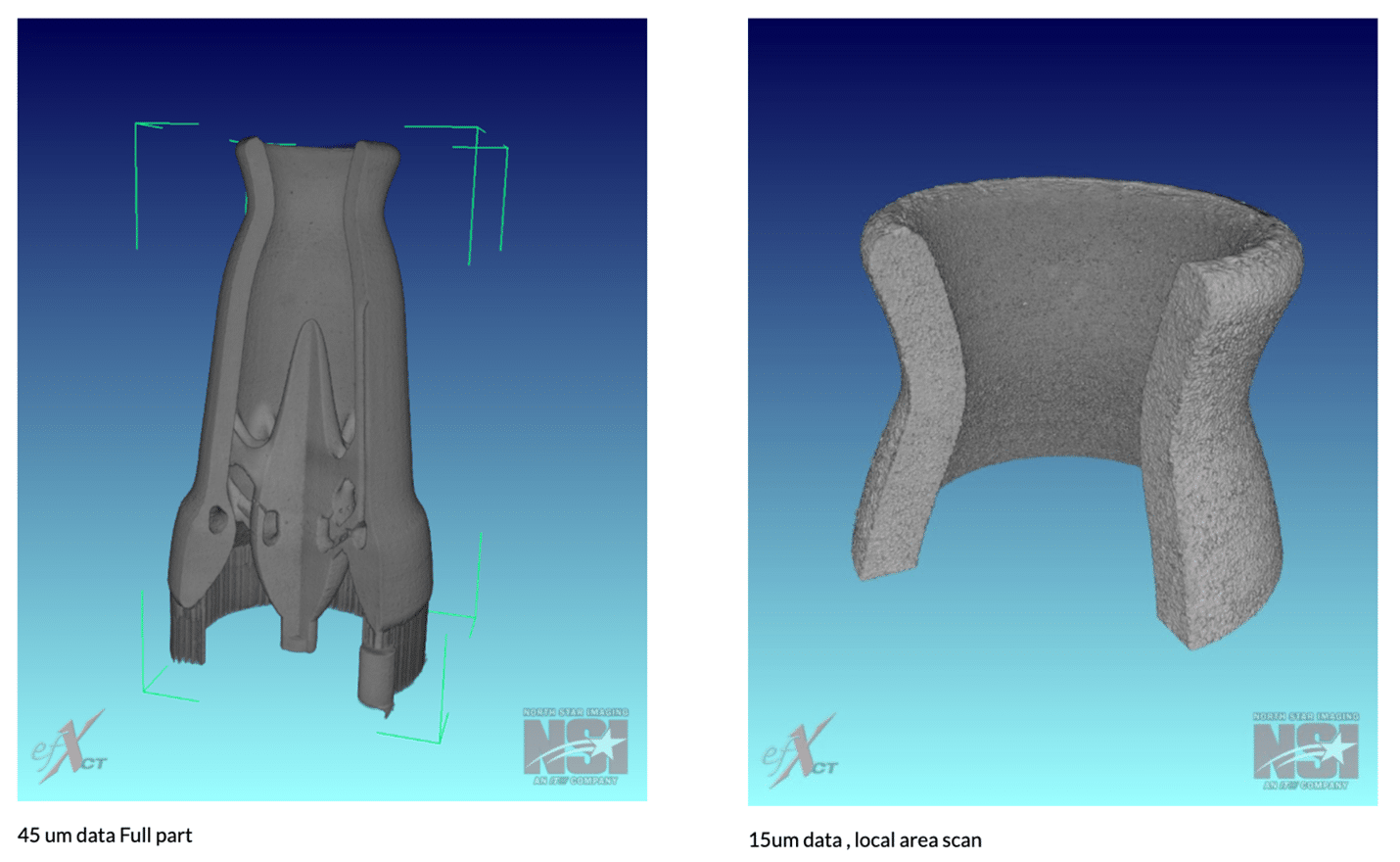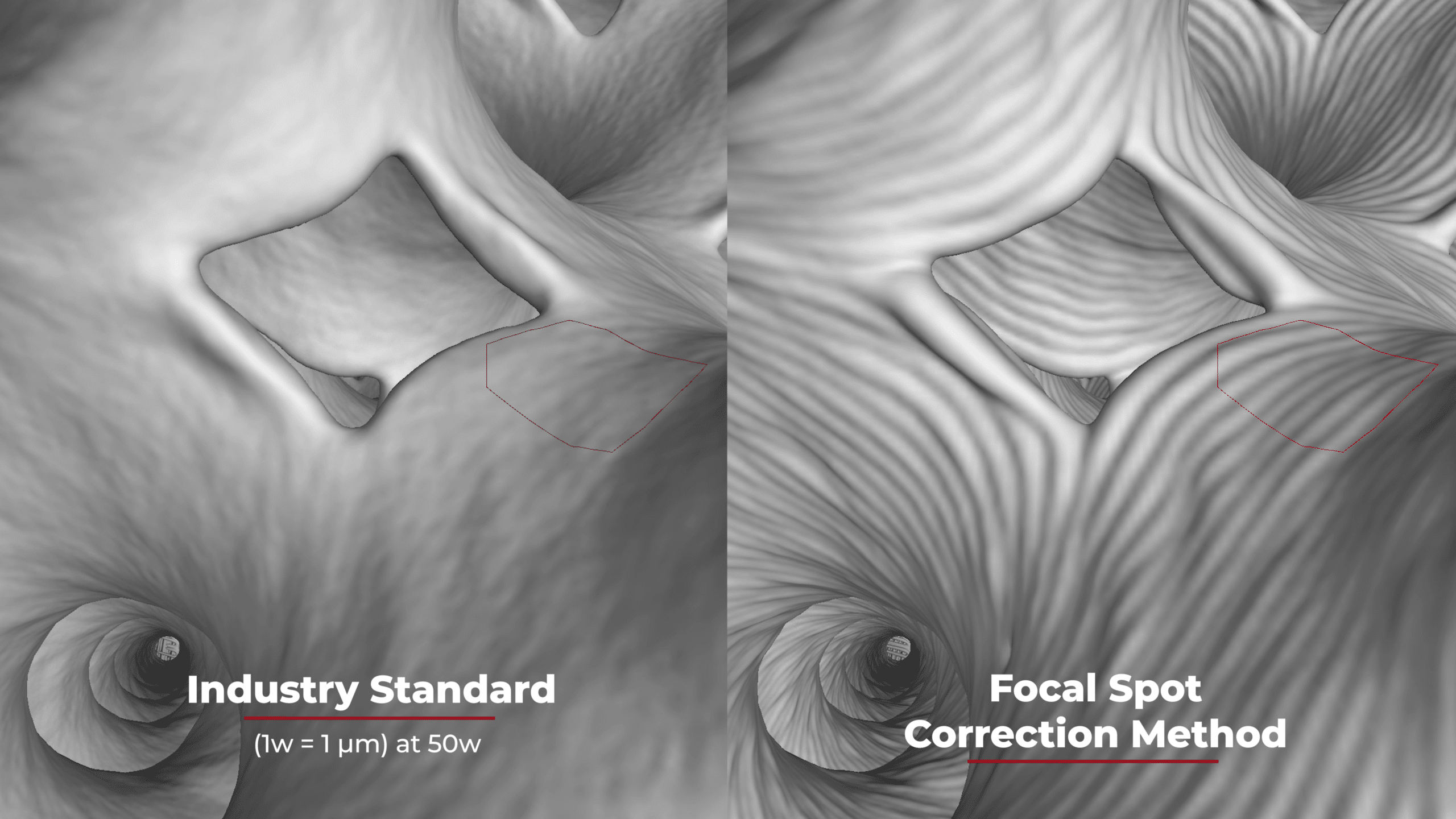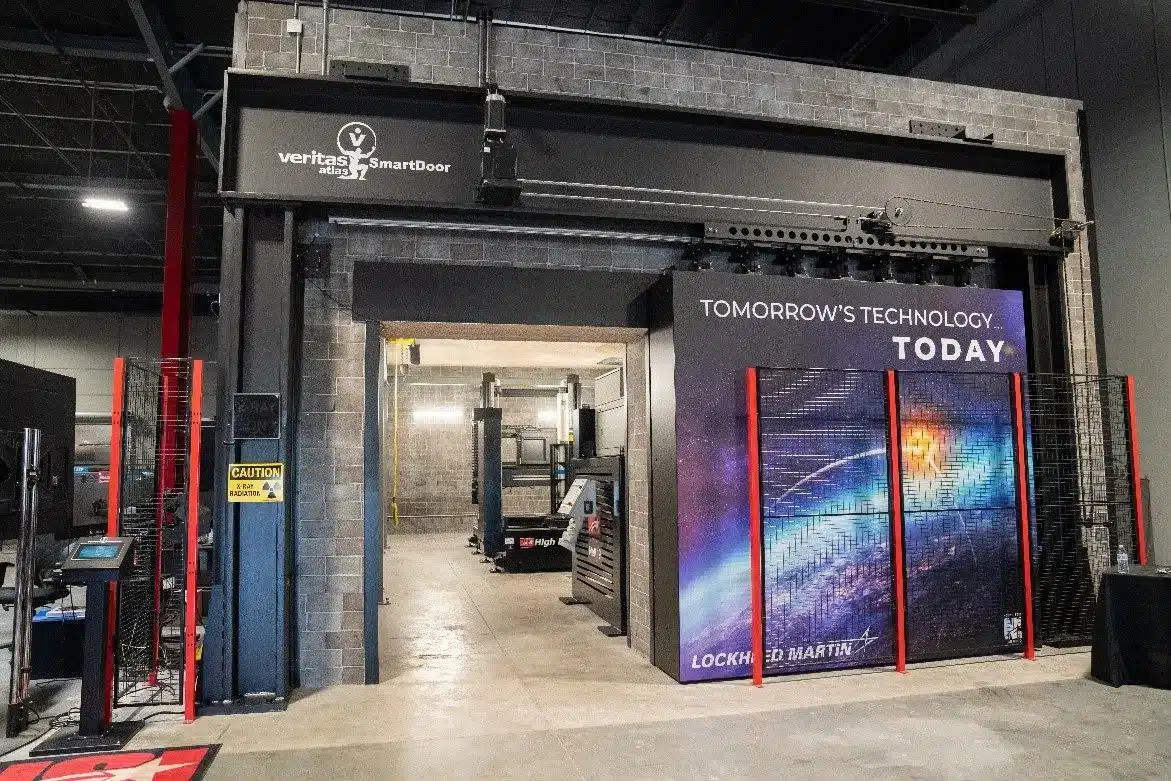Optimizing Image Signal to Noise Ratio Using Frame Averaging
When performing Digital Radiography and Computed Tomography, a common issue all of us deal with is the balancing of exposure time and signal to noise ratio (SNR). SNR simply compares the level of the desired signal to the level of the undesirable background noise within an image. SNR is therefore the result of dividing the average (mean) signal by the variation (standard deviation)

Signal to Noise Ratio is one factor that can have a significant impact on Image quality. In general the higher the signal level the more useful information there is within the image and it is therefore weighted more heavily than the lower level noise. There are three common types of noise that we are dealing with in the digital imaging process. Random Noise, Fixed Pattern Noise and Banding Noise.
- Random Noise is produced from intensity fluctuations above and below the actual image intensity. There will always be some amount of random noise in an electronic imaging system. The pattern of the random noise is random in nature even for continuous exposure parameters.
- Fixed Pattern Noise involves pixels that provide the same response or an unproportioned response compared to other pixels, even though exposure parameters may vary.
- Banding Noise is related to the reading out of the columns and rows of pixel data and is directly related to how the individual detector is manufactured.
Fixed pattern Noise and Banding Noise can typically be corrected or substantially reduced through the Detector calibration/correction process since it is repeatable. The random noise is what can be reduced through frame averaging. Typically the best way to improve SNR is to first improve the X-ray photon signal level. Often these signal levels cannot be further increased by changing exposure variables. In these cases, SNR can still be improved drastically by the common practice of Frame Averaging. A common question however is “How much frame averaging do I need”. The primary concern is that frame averaging takes additional time. Using an acquisition of 1 frames per second (Fps) and 10 frames averaged (Fa) would require a 10 second exposure time. This may be perfectly acceptable for a few DR shots but in high volume production imaging or CT this may not be practical. To better help balance these variables we should work first to establish our minimum frame averaging based on a desired SNR value, then we can calculate the number of frames needed to be averaged to attain the approximate SNR necessary to provide the required image quality.
Considerations in Frame Averaging:
When Applying Frame averaging consider the following:
- Image averaging works on the assumption that the noise in your image is truly random. This way, random fluctuations above and below actual image data will gradually even out as one averages more and more images.
- In general theory, the magnitude of fluctuation (noise) drops by the square root of the number of images averaged.
- After a certain point there will not be a noticeable difference in the noise reduction with additional frames averaged.
- The number of frames averaged in the detector corrections (Offset and Gains) will have an impact on the SNR of the acquired image. In general, more frames averaged in the image acquisition will require an increase in the number of frames averaged in the detector corrections. A good starting point would be to multiply the number of frames averaged within the acquisition by a factor of 100.
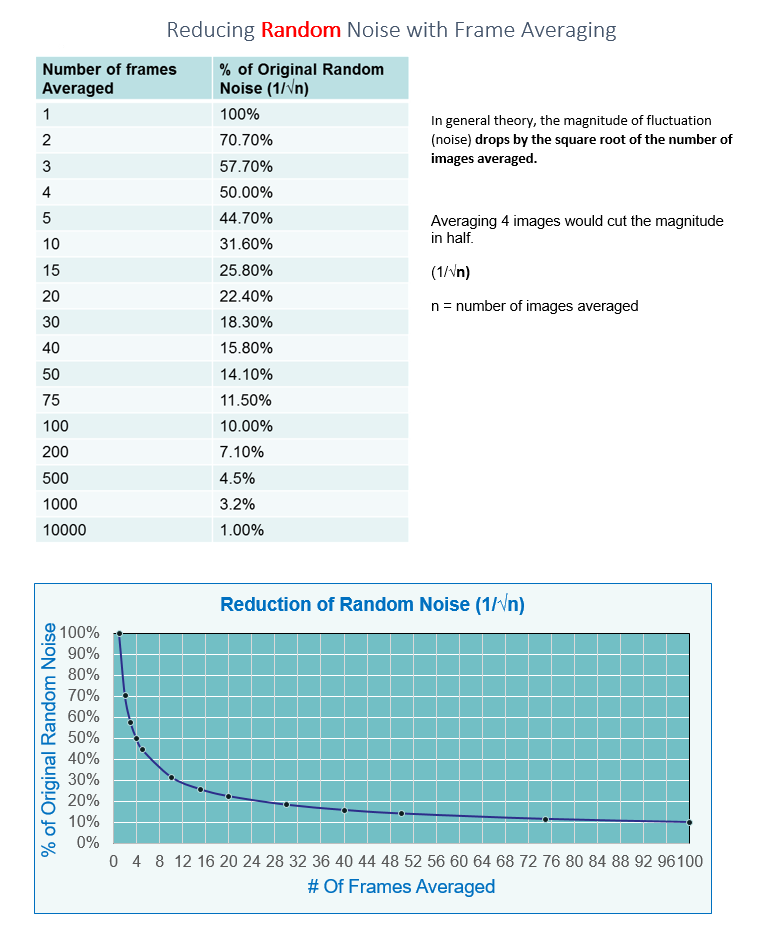
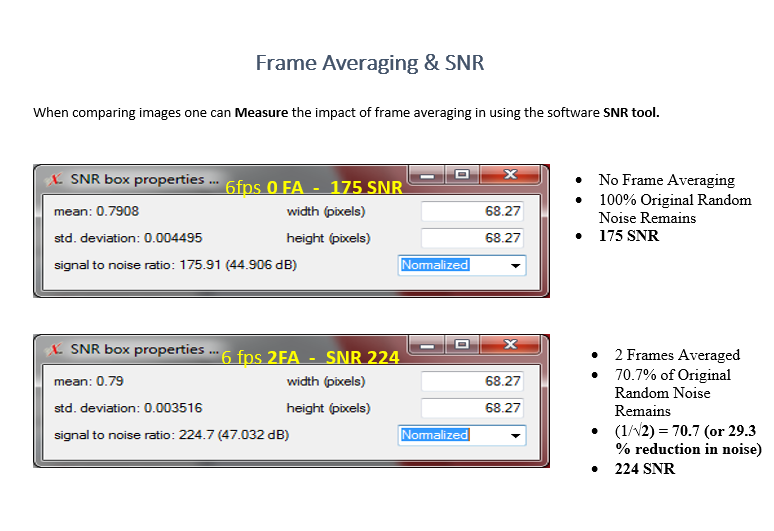
Optimum SNR is a balancing act between Signal level and Noise reduction. Below are the basic steps in Optimizing SNR.
- For a given kV, first drive the signal as high as possible using current and focal distance.
- Then experiment with frame rate and frame averaging.
- Typically the best SNR for a given intensity level will be achieved using the highest frame rate as possible with as many frames averaged for a given cycle time.
- For a given signal value, a higher SNR value will be achieved using 10fps with 20 frames averaged (2 second acquisition) versus 1fps and 2 frames averaged (2 second acquisition).
- Therefore one can also use the high frame rate to accomplish an equal SNR to the lower frame rate with a reduced cycle time.
- Also a higher frame rate with frame averaging and a slightly lower signal can still achieve a better SNR than a lower frame rate and a slightly higher signal level if using minimal or no Frame averaging.
- The number of frames averaged in the acquisition of an image is directly impacted by the number of frames averaged in the detector corrections. Consider more frames averaged for DR imaging of the lower signal regions of the product. Also consider more frames averaged when acquiring the gain corrections for the lower signal levels.
- Finally, compare the impact of the different frame averaging configurations by using the SNR tool and record the required configuration that produced the best balance between time and SNR.
